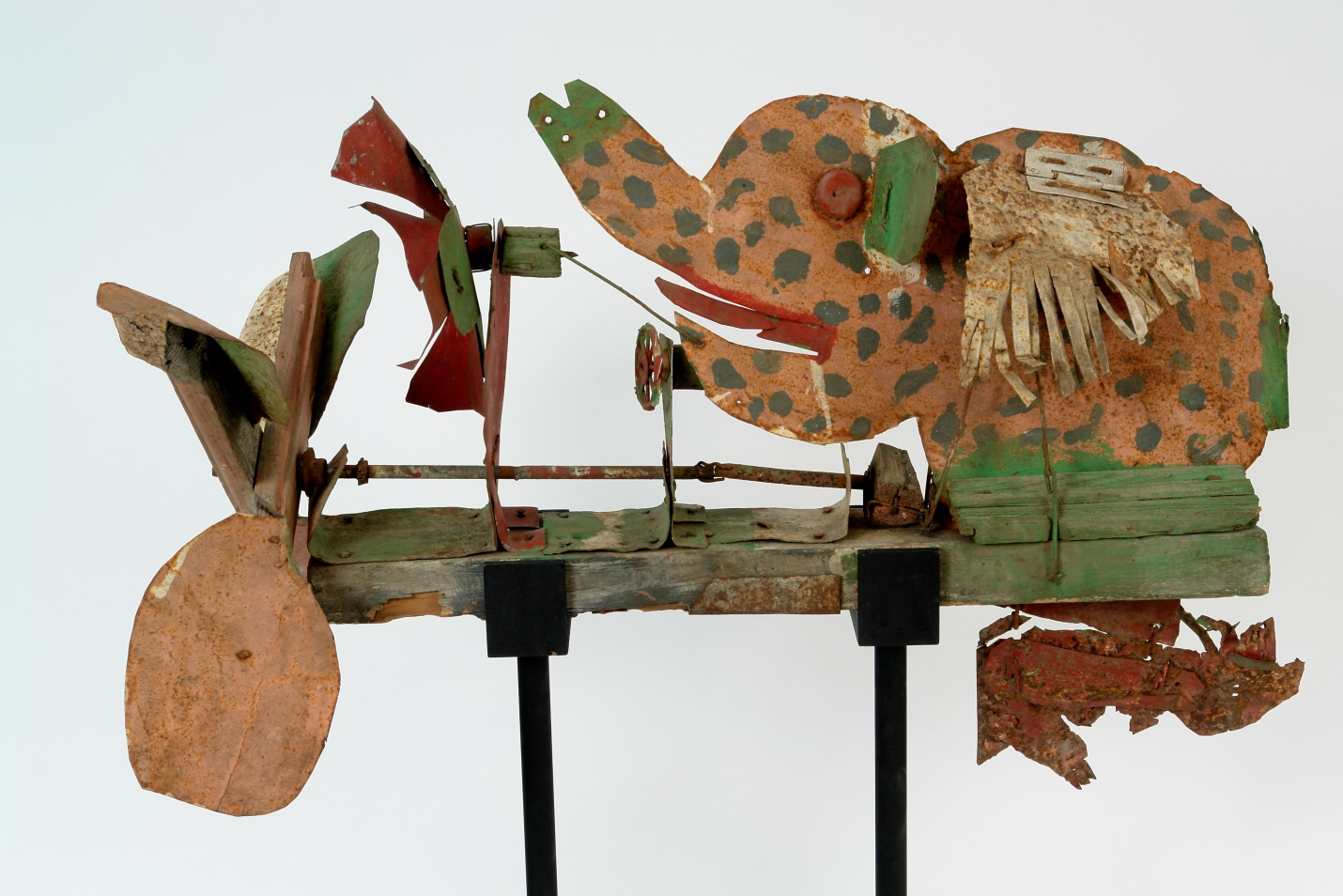David Butler
1898 – 1997
David Butler was the eldest of eight children born to a carpenter father and missionary mother in Louisiana. After attending school for one year, Butler left to help look after his siblings and work at a variety of manual jobs. When he was in his forties, he suffered a serious injury whilst working at a sawmill, forcing him into early retirement and leaving him to survive on state benefits. Although Butler later insisted that he had been drawing all his life, it was his forced retirement which led him to devote the rest of his life to art. He began to cut out shapes from discarded scraps of tin sheet, using a hammer and chisel. Then, using house paints, he drew boldly colored compositions and hung the finished pieces around his home. Whirligigs, sculptures, and bright constructions were added and rapidly filled his house and yard. The subjects of his paintings encompassed those associated with his experiences of life. People, animals, celebrations, but also more symbolic and fantasy themes gave Butler his inspiration. A frequently used image which appeared in many of his works was a four-pointed star, reminiscent of those which occur in much Haitian and African art. Butler’s work was much sought after and accordingly his yard environment was soon emptied. ¹
Butler was one of the artists featured in the landmark book and exhibits “Black Folk Art in America” 1930 - 1980.
David Butler © The Arient Family 2021




